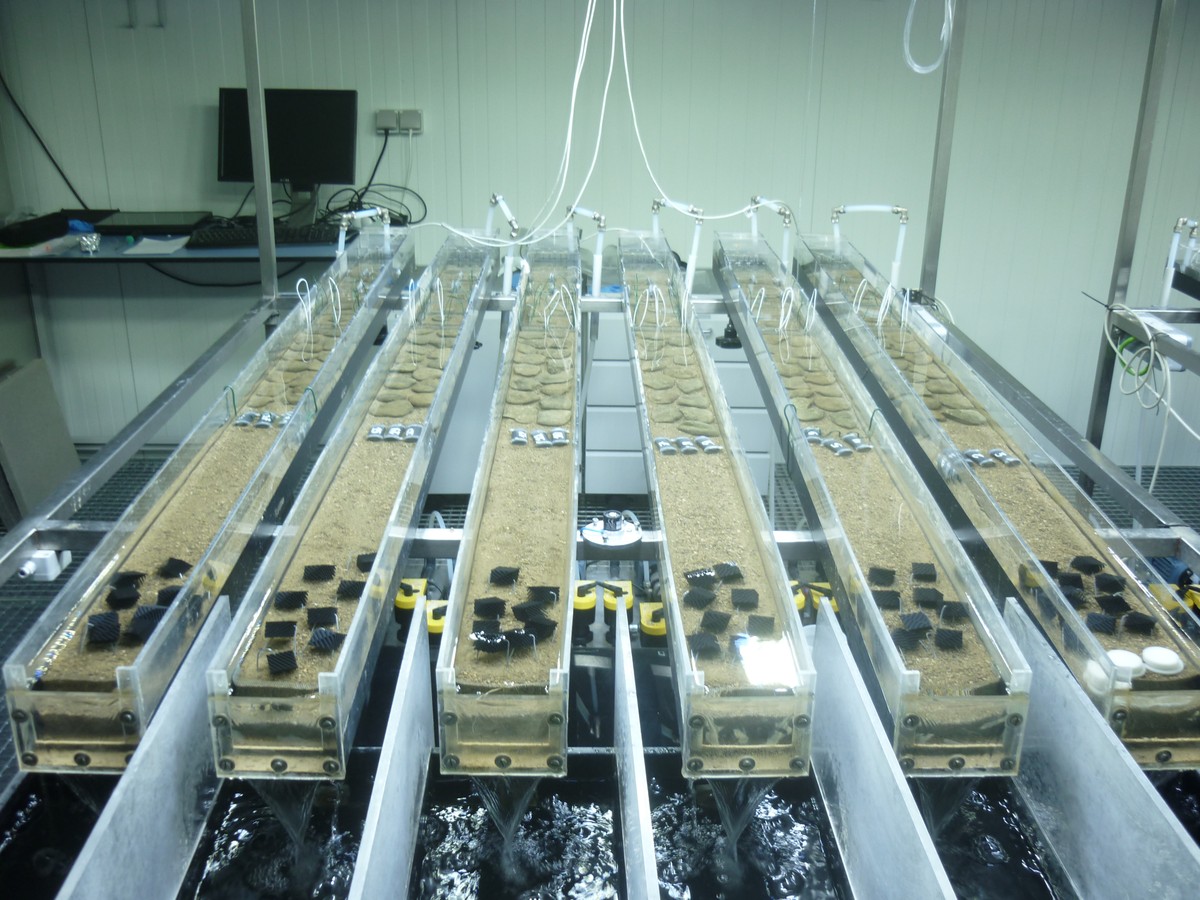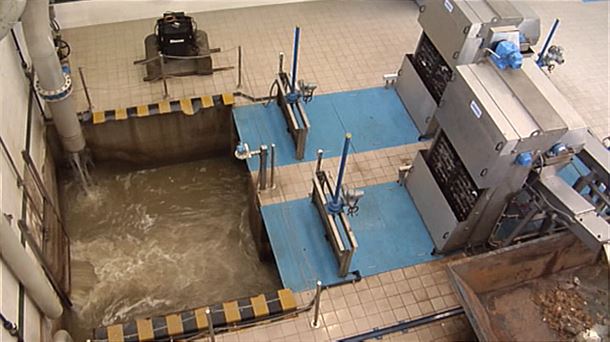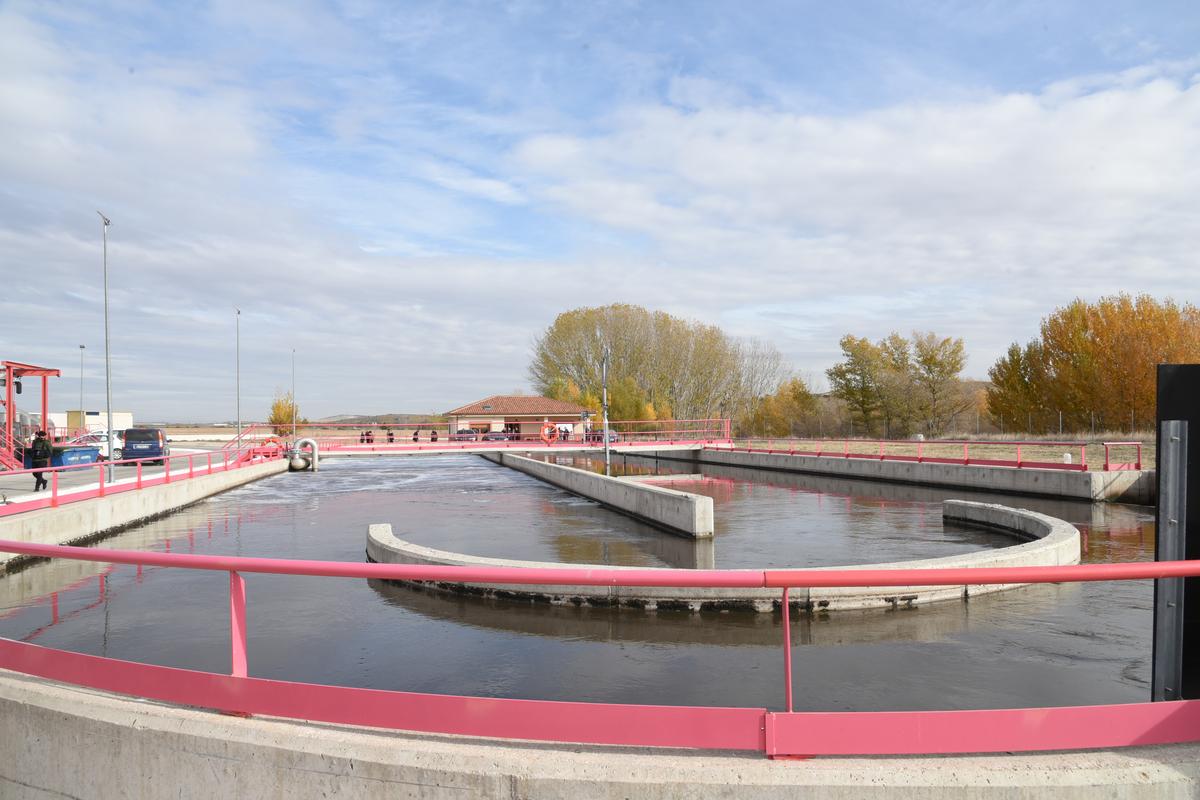Hidden effects of the spills of the scrubbers
2020/10/19 Olatz Pereda Iriondo - Biologian doktorea Iturria: Elhuyar aldizkaria
Human beings have often sought development without taking into account the harmful effects on the environment. Formerly, for example, most of the streams of Euskal Herria were found in a lamentable state. Fortunately, however, in the current photographs different colors have flowered due to better environmental management (Figure 1). In this transformation, wastewater treatment plants have been fundamental, as they play a fundamental role before releasing wastewater into the medium. But do they solve the problem? At least, before starting the thesis, I thought so.
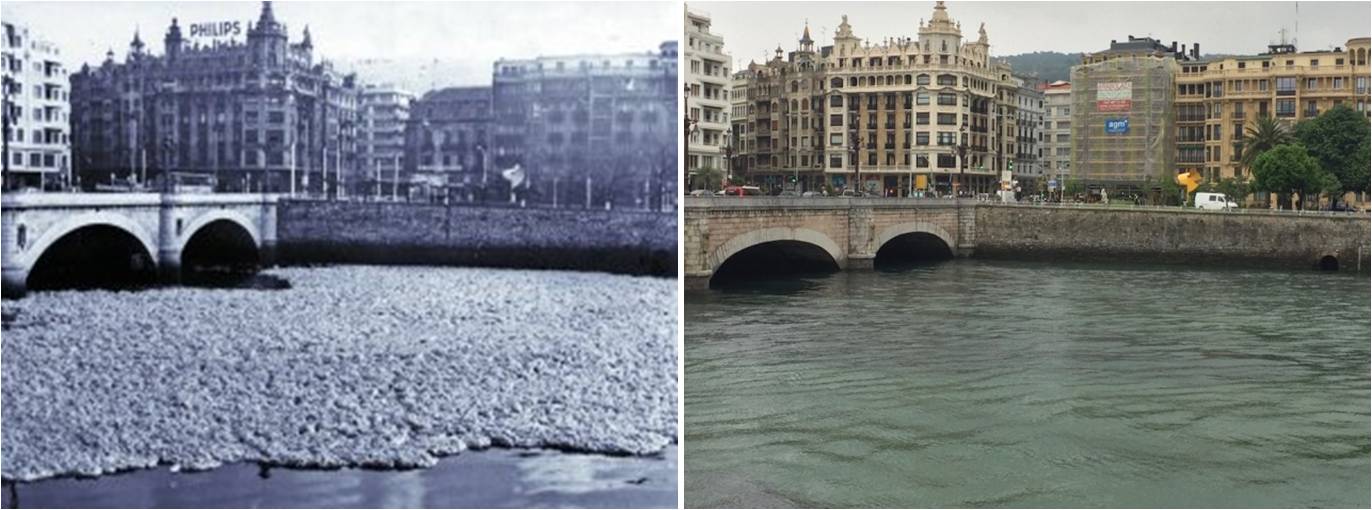
The wastewater treatment plants treat dirty wastewater that comes to them through complex processes and, once clean, they release them to the medium. However, what influence do these alleged clean waters have in the environment? This question is of great importance since the proportion of these waters purified in our rivers and coasts is increasing. Unfortunately, the available information remains limited and, often, the investigations reflect contradictory results. In addition, pollution is becoming more and more complex due to the synthesis and use of new chemicals. For example, in an increasingly aged society, the consumption of drugs is increasing considerably, more and more drugs are coming to the treatment plants, and they cannot completely eliminate them. That is why the water released by the wastewater treatment plants has become a very complex chemical cocktail, and its possible ecological repercussion is worrying. In addition to the composition of these purified waters, the final concentration of the spill in the receiving channel is also important, since it is not the same to detach in rivers of great flow as in practically exhausted streams. For this reason, the aim of this doctoral thesis was to analyze the impact of these discharges on the streams.
Simultaneous work of various forces
In nature, it is common for many sources of stress to simultaneously affect living beings. In the streams, water shortages are becoming more and more important due to both climate change and water extraction. In addition, water shortages reduce the dilution capacity of the river. In the most serious cases, the stream itself is exhausted and the water flowing through the bed is a purely purifying spill. Therefore, in a first step I studied the natural rivers that received the discharges to observe the consequences of the interaction between the scarcity of water and the pollution of the wastewater.
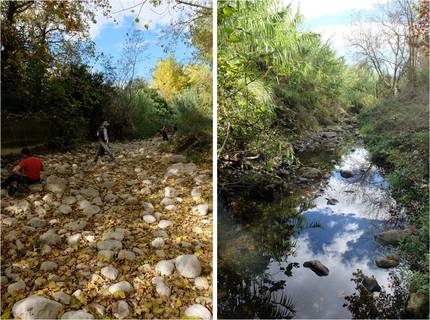
To get a picture as accurate as possible of reality, I needed large gradients of both concentration and water scarcity, and I found them in Catalonia in the 13 tributaries of the River Ebro: some rivers ran out in summer, others did not, some received much pollution, others less. To characterize the condition of the spills I defined two areas in all the streams, one above and one below the spill point (figure 2) and studied it for a whole year. Water quality and ecosystem functioning were my subjects of study (ecosystem respiration, nutrient recyclability, etc. ).
The diets analyzed significantly reduced the quality of the water, reducing the oxygen concentration and increasing the concentrations of nutrients and drugs. The condition, logically, was much greater when the unpurified waters reached the exhausted rivers. Changes in water quality affected most of the analyzed functions. However, the response was not uniform: some processes accelerated (for example, breathing), others were reduced (for example, nutrient absorption capacity) and there were processes that were not modified (for example, the decomposition of organic matter).
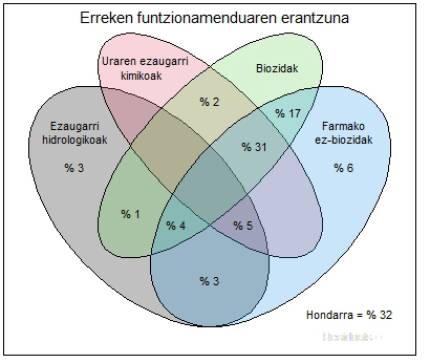
But what sources of stress provoked more in the functioning of rivers: water scarcity or pollution? For this purpose, all variables measured in the streams (more than 100!) I classified them in four groups, according to their nature and mode of action: “normal” chemical characteristics of water, biocidal pharmaceutical compounds (antibiotics and antifungal), other drugs and hydrological variables. The influence of the chemical side predominated in the measured processes, especially through biocidal and non-biocidal interactions (Figure 3). Hydrology, for its part, left clear consequences on the rivers, but did not significantly condition its functioning.
Contagion for science
Due to a climate and better management, in Euskal Herria we can hardly find dirty streams similar to those observed in Catalonia. Here most of the spills are purified well and, as the climate is less dry, they are diluted more. However, are we sure that the purified water does not affect the medium? This is difficult to measure since all the streams that receive the purified waters are already quite punished.
To deal with this lack, the authorization was obtained to contaminate a clean river with the discharges of a purifier (Figure 4). It was the first time a river was specifically contaminated in the world! To do this, the Apraiz de Elgoibar treatment plant, one of the best water treatment plants in the Basque Country, was selected. For research we unravel part of the water (through an enormous engineering! ) to free the Apraiz stream that runs next to the scrubber and contaminate its last 100 meters. To isolate the effects of the spill, I once again defined two areas in the river, above and below the new spill entrance, and studied it for two years, one year before releasing the spill and another year later. During these two years I analyzed every two months the key functions in the river, with the assistance of a team of 10 people each time. The same dilution as that of the Apraiz in Deba treatment plant, which was expressly implemented for research, has shown that the conclusions of this study can reflect the situation of many other streams of Euskal Herria.
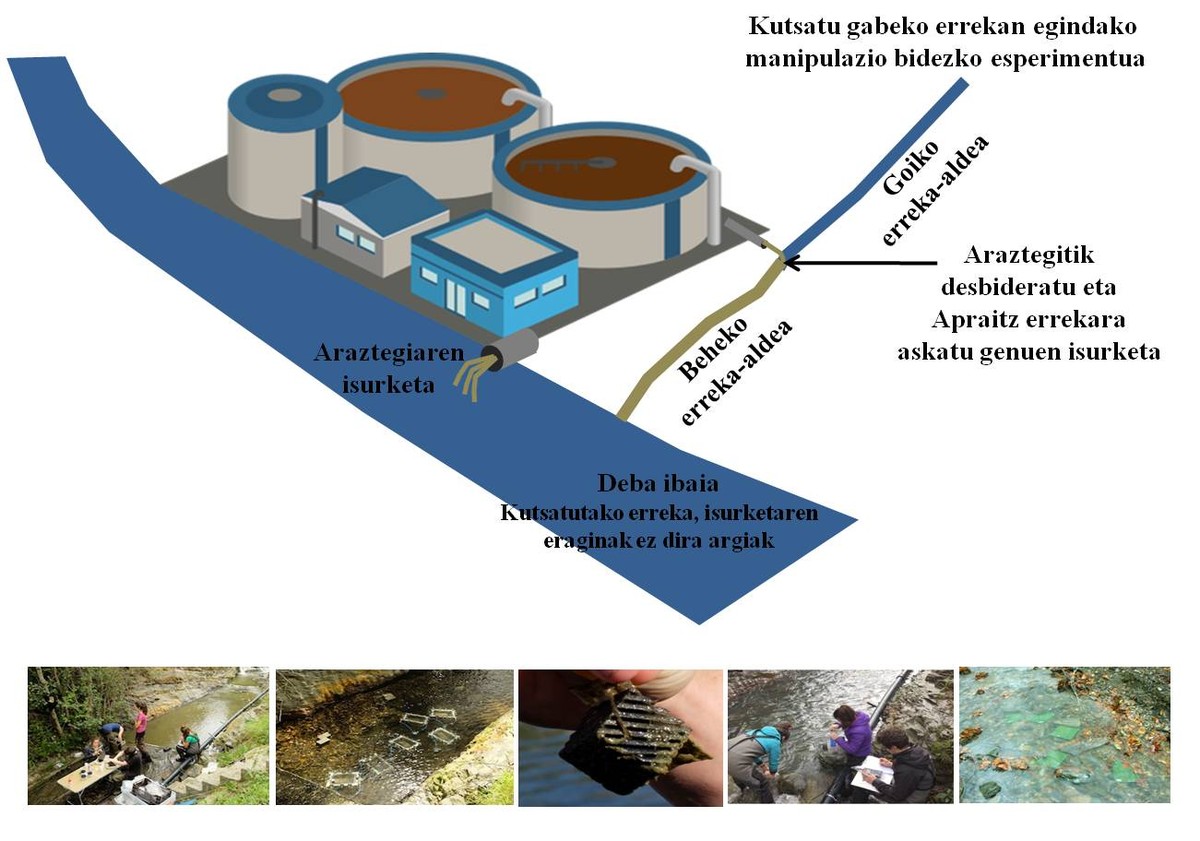
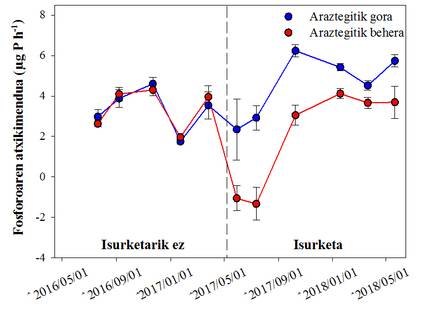
The purified water, although diluted up to 3% in the receiving stream, had important ecological repercussions on the structure and functioning of the stream, which altered most of the analyzed processes. The purified water modified most of the functions of the river. For example, the nutrient retention capacity of algae was significantly reduced (Figure 5). The results of the experiment reveal an important message that can have important implications both in the management of ecosystems and society: well treated wastewater can also have complex effects on receiving rivers.
Bringing the streams to the laboratory
The two previous works showed that the purified waters can have a very variable influence on the rivers, both in the quality of the discharges and in the degree of drought of the receiving stream. This suggests that the concentration of purified water in the receptor can be decisive. And the next question of the thesis was how would ecosystem processes respond to a gradient contamination?
Being impossible to find a gradient of this type in nature, I decided to simulate it in the laboratory. Once again, I went to Catalonia, to the artificial streams that have the Catalan Water Research Institute of Girona (Figure 6). To condition the artificial rivers, I will take advantage of the sediments and stones of an uncontaminated stream near the residence, as well as the purified waters in a water treatment plant. Thus, in the 24 artificial streams available, I set 8 levels of dilution, from the clean stream to pure water treated in the scrubber. In this way we were able to analyze the response of the processes related to the algae community to the pollution gradient. In this case, the objective was to analyze the shape or pattern of each response, so the results obtained were adjusted to different mathematical models, of which it was adjusted to be able to analyze better (Figure 7).
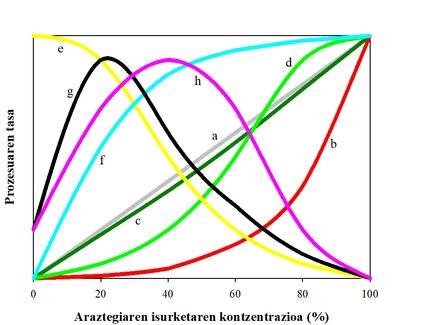
Once again, the purified waters gave rise to complex responses in the functioning of the algae community. My initial hypotheses predicted that in the highest concentration there would be no toxicity, but to my surprise most of the measured processes accelerated, they did not attenuate. However, faced with a general dynamic of this type, the processes showed very different patterns (figure 8). Some processes, such as breathing or community decomposition, accelerated without limits (even at higher concentrations! ), but the responses of other processes such as gross primary production or biomass were saturated from intermediate levels of contamination. On the other hand, nutrient retention slowed again. It should be noted the results that suggest that the activity of the algae can be one of the most sensitive processes of the functioning of the streams, especially the capacity of nutrient retention of the algae, which can be a good indicator of the effects of pollution.
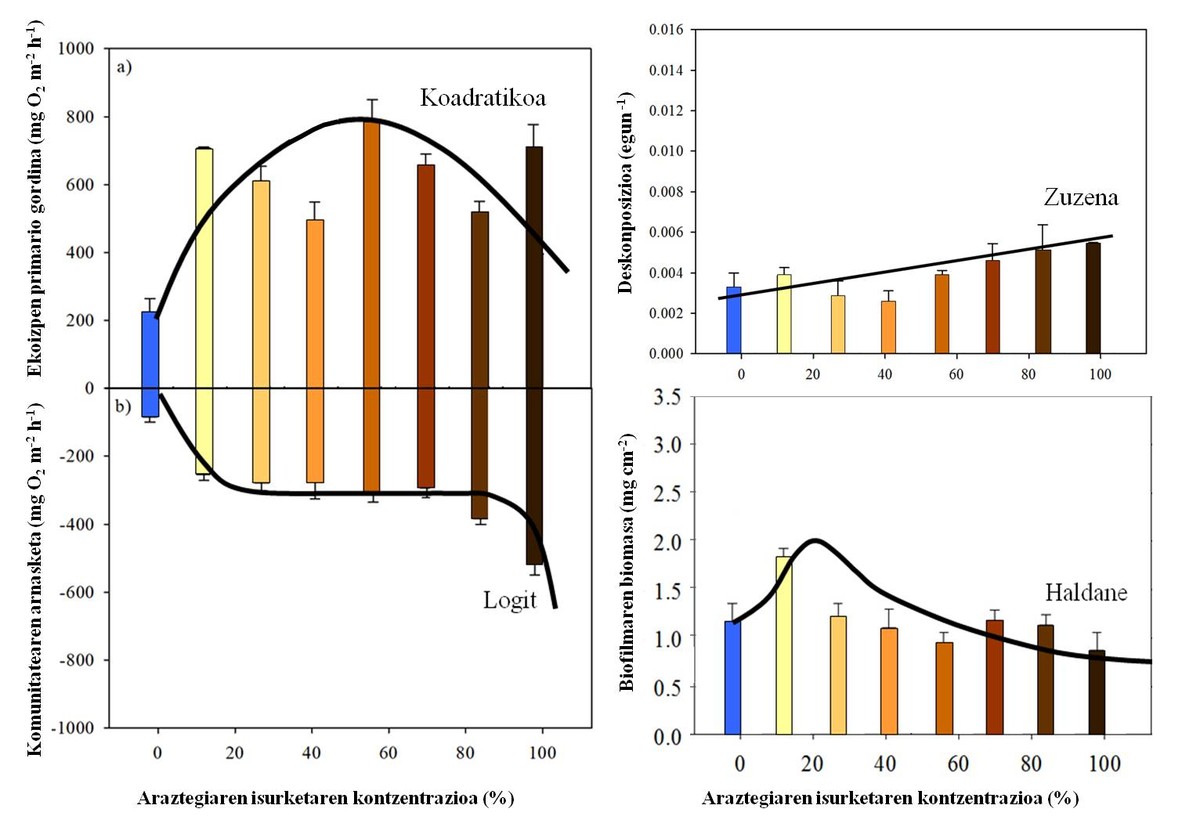
Indications of past performances
The results of this thesis show that urban and urban wastewater, including debris, can give rise to complex responses in the functioning of ecosystems. At present, there are more and more technological advances in the resolution of pollution, but when do damage disappear in the environment? The last question of my thesis was, therefore, how will the evidence of pollution from the past affect ecosystem recovery?
To answer this question, I added a new section to the previous experiment. In this second phase, once the regattas were contaminated for a month, they were left in clean water for another month, and the same ecosystem responses were reanalyzed to see if once the pollution had disappeared, the response patterns were maintained. The streams, despite having a month of clean water in the river, still showed a remarkable influence of the previous phase. The responses of all the processes were the same as those shown in the first phase. This shows that the effects of purified waters can be maintained for a long time.
Silent spring
In the 1960s, Rachel Carson alerted the society of the damage that can suffer chemical pollution in the health of living things. Since then, scientists have joined this claim and, at present, chemical pollution is one of the most important aspects of global change. The results of this thesis go in the same direction, since the cleaners eliminate the most serious or evident pollution, but can still cause many tacit damage in the health and functioning of the streams. It is clear that to address environmental problems it is necessary to improve management. But for this, it is essential that the entire population become aware of the problem. And in recent years we have all seen great improvements in the quality of the Basque Country regattas, but we still have to improve! And now more than ever is in our hands!
Bibliography Bibliography Bibliography
Arroita M., Elosegi A. and Hall R.O. (2018). Twenty years of daily metabolism show riverine recovery following sewage abatement. Limnology and Oceanography, 64: S77-S92. Just right: 10.1002/lNo.11053
Carlson R. (1962). Silent Spring. Houghton Mifflin Company (Boston) and The Riverside Press (Massachusetts).
H. H. Pereda, Acuña V, von Schiller D., Sabater S. and Elosegi A. (2019). Immediate and legacy effects of urban pollution on river ecosystem functioning: A mesocosm experimental. Ecotoxicology and Environmental Safety, 169: Fit 960-970: 10.1016/j.ecoenv.2018.11.103
H. H. Pereda, Solagaistua L., Atristain M., by Guzmán I. Larrañaga A., von Schiller D. and Elosegi A. (2020). Impact of wastewater effluent pollution on stream functioning: A whole-ecosystem manipulation experimental. Environmental Pollution, 258: Fit 113719: 10.1016/j.envpol.2019.113719
Pereda O., von Schiller D., C. C. García-Baquero, Mor J.R. Acuña V, , Sabater S. and Elosegi A. (2021). Combined effects of urban pollution and hydrological stress on ecosystem functions of Mediterranean streams. Science of the Total Environment, 141971. doi: 10.1016/j.scitotenv.2020.141971
Rodriguez-Mozaz S., Chamorro S., Martí E., Huerta B., Gros M., Sànchez-Melsió A., Borrego C.M. Barceló D. and Balcázar J.L. (2015). Occurrence of antibiotics and antibiotic resistance genes in hospital and urban wastewaters and their impact on the receiving river. Water Research, 69: Fit 234-242: 10.1016/j.watres.21.11.2014
J.E. Rosi-Marshall, D. Snow, Bartelt-Hunt S.L. Paspalof A. and Tank J.L. (2015). A review of ecological effects and environmental fate of illicit drugs in aquatic ecosystems. Journal of Hazardous Materials, 282: Fit 18-25: 10.1016/j.jhazmat.2014.062
Sabater S., Elosegi A. and Ludwig R. (2018). Multiple stressors in river ecosystems. Status, impacts and prospects for the future. (Eds. Sabater S., Elosegi A and Ludwig R.), Elsevier, 404 pages. ISBN: Adjusted number 2: 10.1016/C2016-0-01770-9

Gai honi buruzko eduki gehiago
Elhuyarrek garatutako teknologia




